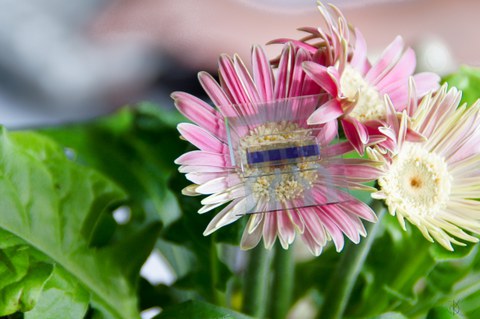Jun 16, 2016
TU Dresden scientists achieve breakthrough in organic semiconductors

Semitransparent organic photovoltaic cell from the Dresden Integrated Center for Applied Physics and Photonics (IAPP)
Publication in “Science” magazine
The efficient, low cost and environmentally friendly organic semiconductor technology based on organic molecules or polymers is a highly promising new field of electronics. Display companies already use organic light-emitting diodes in mobile phones or TV sets. Another focus is the development of organic photovoltaic cells: flexible, transparent, and large-area devices produced at low cost promise new application prospects. A group of scientists under the direction of Prof. Karl Leo from TU Dresden, in cooperation with the Max Planck Institute for Polymer Research in Mainz, Linköping University (Sweden) and the Fraunhofer Institute FEP in Dresden introduced a new method in making these organic semiconductor devices more efficient. The renowned scientific journal “Science” publishes a paper on these breakthrough results this week entitled "Band structure engineering in organic semiconductors".
A key breakthrough in modern electronics was the introduction of band structure engineering for inorganic semiconductors. By blending materials with different energy levels, it became possible to continuously tune band energies by simply varying the composition of binary, ternary or quaternary alloys. However, an implementation of this principle in organic semiconductors has not been possible so far. Here, the established means of tuning the electronic levels is by varying the molecular design. Such changes in molecular design require a new synthesis and do not provide the same degree of fine-scale tunability obtained by the blending of inorganic semiconductors. Comparable to the usage of band structure engineering in inorganic semiconductors, the team showed that valence and conductive energy levels can be continuously tuned by blending two different organic molecules. Employing this effect exemplary in an organic solar cell, the open-circuit voltage as an important device parameter can be adjusted continuously. Apart from optimizing established devices, this mechanism offers completely new prospects in the design of new device architectures.
https://doi.org/10.1126/science.aaf0590
Media inquiries:
Prof. Karl Leo
Tel.: +49 (0) 351 463-37533
mobil: 0175-540-7893
